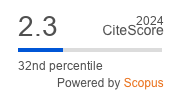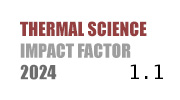ABSTRACT
Shallow geothermal energy refers to geothermal resources within 200m below the surface, which has the advantages of stable temperature, strong sustainability, environmental protection and economy, and has been widely used by residents in various regions since ancient times. With the acceleration of industrialization and urbanization and the further expansion of human demand for energy, the development and utilization of shallow geothermal energy has gradually moved from the surface to the deep. In this process, researchers have conducted in-depth research on geothermal energy heat exchange equipment, temperature measurement and other technologies, and introduced artificial intelligence to predict underground temperature and humidity, and made a lot of progress. Focusing on the ground source side of shallow geothermal energy, this paper comprehensively expounds the research progress in the past 10 years from the aspects of the observability of geothermal energy utilization, the thermal response testing technology of buried pipe, the heat transfer model and the application of artificial intelligence, summarizes the difficulties at this stage, and points out the direction of future solutions.
KEYWORDS
PAPER SUBMITTED: 2025-05-23
PAPER REVISED: 2025-07-20
PAPER ACCEPTED: 2025-07-28
PUBLISHED ONLINE: 2025-09-13
- Mitul,P., et al., A review on geothermal energy resources in India: past and the present, Environmental science and pollution research international, 29 (2022), 45, pp. 67675-67684
- Waltham,D., et al., Earth's precession rate evolution and rapid fall during the Late Proterozoic, Earth and Planetary Science Letters, 648 (2024), 15, pp. 119086-119097
- Nasruddin., et al., Potential of geothermal energy for electricity generation in Indonesia: A review, Renewable and Sustainable Energy Reviews, 53 (2016), 1, pp. 733-740
- Bertani,R, Geothermal power generation in the world 2010-2014 update report, Geothermics, 60 (2016), 3, pp. 31-43
- Huttrer,G.W, 2021. Geothermal power generation in the world 2015-2020 update report, Proceedings, World Geothermal Congress 2020, Reykjavik, Iceland
- Dobson, P., et al., Analysis of curtailment at The Geysers geothermal Field, California, Geothermics, 97 (2020), 9, pp. 101871-101885
- Nasruddin., et al., Potential of geothermal energy for electricity generation in Indonesia: A review, Renewable and Sustainable Energy Reviews, 53 (2016), 1, pp. 733-740
- Brilian, A., et al., Technical initiatives to develop low-medium temperature geothermal resources in Indonesia: Lessons learned from the United States, Geoenergy Science and Engineering, 247 (2025), 4, pp. 213720-213761
- Mary, H., et al., Geothermal Energy:Utilization and Technology , UNESCO, Paris , France, 2003
- Lund, J., et al., Direct utilization of geothermal energy 2020 worldwide review, Geothermics, 40 (2011), 3, pp. 159-180
- Li, M., et al., Parameter estimation of in-situ thermal response tests for borehole ground heat exchangers, International Journal of Heat and Mass Transfer, 55 (2012), 9, pp. 2615-2624
- Shim, B.O., et al., Ground thermal conductivity for (ground source heat pumps) GSHPs in Korea, Energy, 56 (2013), 7, pp. 167-174
- Zhang, C., et al., A review on thermal response test of ground-coupled heat pump systems, Renewable and Sustainable Energy Reviews, 40 (2014), 12, pp. 851-867
- Zhang, L., et al., Improved p(t)-linear average method for ground thermal properties estimation during in-situ thermal response test, Procedia Engineering, 121 (2015), pp. 726-734
- Freifeld, B., et al., Ground surface temperature reconstructions: Using in situ estimates for thermal conductivity acquired with a fiber-optic distributed thermal perturbation sensor, Geophysical Research Letters, 35 (2008), 14, pp. L14309-L14314
- Fujii, H., et al., An improved thermal response test for U-tube ground heat exchanger based on optical fiber thermometers, Geothermics, 38 (2009), 4, pp. 399-406
- Beier, R., et al., Vertical temperature profile in ground heat exchanger during in-situ test, Renewable Energy, 36 (2011), 5, pp. 399-406
- Sakata, Y., et al., Multilayer-concept thermal response test: Measurement and analysis methodologies with a case study, Geothermics, 71 (2018), 1, pp. 178-186
- Zhang, B., et al., Actively heated fiber optics based thermal response test: A field demonstration, Renewable and Sustainable Energy Reviews, 134 (2020), 12, pp. 110336-110346
- Zhang, Y., et al., Comparison of test methods for shallow layered rock thermal conductivity between in situ distributed thermal response tests and laboratory test based on drilling in northeast China, Energy and Buildings, 173 (2018), 8, pp. 634-648
- Zhao, P., et al., Stratified thermal response test measurement and analysis, Energy and Buildings, 215 (2020), 5, pp. 109865-109875
- Galan, P., Introduction to artificial neural networks in control applications, Control Engineering, 69 (2022), 1, pp. 28-30
- Mukherjee, P., et al., Artificial Neural Network based Dimension Prediction of Rectangular Microstrip Antenna, Journal of The Institution of Engineers (India): Series B, 103 (2022), 4, pp. 1033-1039
- Zhang, K., et al., Artificial neural network modeling for steam ejector design, Applied Thermal Engineering, 204 (2022), 5, pp. 117939-117948
- Syed, F., et al., Application of ML & AI to model petrophysical and geomechanical properties of shale reservoirs - A systematic literature review, Petroleum, 8 (2022), 2, pp. 158-166
- Holmes, R., et al., Machine Learning-Enhanced Play Fairway Analysis for Uncertainty Characterization and Decision Support in Geothermal Exploration, Energies, 15 (2022), 5, pp. 1929-1985
- Saibi, H., et al., Magnetic and gravity modeling and subsurface structure of two geothermal fields in the UAE, Geothermal Energy, 10 (2022), 1, pp. 1-25
- Haby, M., et al., Correlation of Aerogravity and BHT Data to Develop a Geothermal Gradient Map of the Northern Western Desert of Egypt using an Artificial Neural Network, Pure and Applied Geophysics, 172 (2015), 6, pp. 1585-1597
- Shan, K., et al., Risk Assessment of Fracturing Induced Earthquake in the Qiabuqia Geothermal Field, China, Energies, 13 (2020), 22, pp. 5977-6001
- Maity, D., et al., Novel fracture zone identifier attribute using geophysical and well log data for unconventional reservoirs, Interpretation, 3 (2015), 3, pp. T155-T167
- Tut, H., et al., Prediction of Reservoir Temperatures Using Hydrogeochemical Data, Western Anatolia Geothermal Systems (Turkey): A Machine Learning Approach, Natural Resources Research, 29 (2019), 4, pp. 2333-2346
- Shahdi, A., et al., Exploratory analysis of machine learning methods in predicting subsurface temperature and geothermal gradient of Northeastern United States, Geothermal Energy, 9 (2021), 1
- Feng, R., et al., Lithofacies classification of a geothermal reservoir in Denmark and its facies-dependent porosity estimation from seismic inversion, Geothermics, 87 (2020), 9, pp. 101854-101865
- Xue, Z., et al., Thermo-economic optimization of an enhanced geothermal system (EGS) based on machine learning and differential evolution algorithms, Fuel, 340 (2023), 5, pp. 127569-127580
- Bassam, A., et al., Determination of pressure drops in flowing geothermal wells by using artificial neural networks and wellbore simulation tools, Applied Thermal Engineering, 75 (2015), 1, pp. 1217-1228
- Yang, W., et al., Current status of ground-source heat pumps in China, Energy Policy, 38 (2010), 1, pp. 323-332
- Liang, B., et al., Effective parameters on the performance of ground heat exchangers: A review of latest advances, Geothermics, 98 (2022), 1, pp. 102283-102305
- Galgaro, A., et al., First Italian TRT database and significance of the geological setting evaluation in borehole heat exchanger sizing, Geothermics, 94 (2021), 7, pp. 102098-102108
- Florides, G., et al., Ground heat exchangers - A review of systems, models and applications, Renewable Energy, 32 (2007), 15, pp. 2461-2478
- Johnston, I., et al., Emerging geothermal energy technologies, KSCE Journal of Civil Engineering, 15 (2011), 4, pp. 643-653
- Qi, Z., et al., Status and development of hybrid energy systems from hybrid ground source heat pump in China and other countries, Renewable and Sustainable Energy Reviews, 29 (2014), 1, pp. 37-51
- Pouloupatis, P., et al., Measurements of ground temperatures in Cyprus for ground thermal applications, Renewable Energy, 36 (2011), 2, pp. 804-814
- Gao, J., et al., Thermal performance and ground temperature of vertical pile-foundation heat exchangers: A case study, Applied Thermal Engineering, 28 (2008), 17-18, pp. 2295-2304
- Liebel, H., et al., Multi-injection rate thermal response test with forced convection in a groundwater-filled borehole in hard rock, Renewable Energy, 48 (2012), 12, pp. 263-268
- Kolo, I., et al., A comprehensive review of deep borehole heat exchangers (DBHEs): subsurface modelling studies and applications, Geothermal Energy, 12 (2024), 1, pp. 1-49
- Ingersoll, L., et al., Heat conduction: with engineering, geological and other applications, Madison University of Wisconsin Press, Madison, USA, 1954
- Carslaw, H., et al., Conduction of heat in solids, Claremore Press, Oxford, British, 1959
- Li, M., et al., New temperature response functions (G functions) for pile and borehole ground heat exchangers based on composite-medium line-source theory, Energy. 38 (2012), 1, pp. 255-263
- Sun, Z., et al., Research on heat transfer characteristics and borehole field layout of ground heat exchangers to alleviate thermal accumulation with groundwater advection, Thermal Science. 25 (2021), 4, pp. 2781-2794
- Wang, Y., et al., Performance and Feasibility Study of Hybrid Ground Source Heat Pump System for a Public Building Based on a Beijing Case, Thermal Science. 29 (2025), 2, pp. 1383-1388
- Han, X., et al., Analysis and simulation of ecological environment response of ground source heat pump system under thermal equilibrium, Thermal Science. 28 (2024), 2, pp. 1355-1362
- Vasilev, M., et al., Thermal recovery test for determining the thermal conductivity of the soil, Thermal Science. 28 (2024), 1, pp. 425-435

